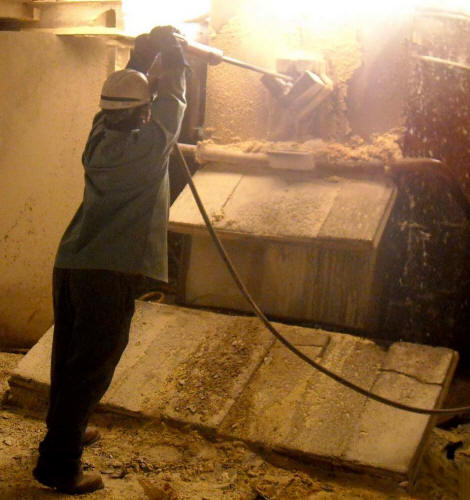 |
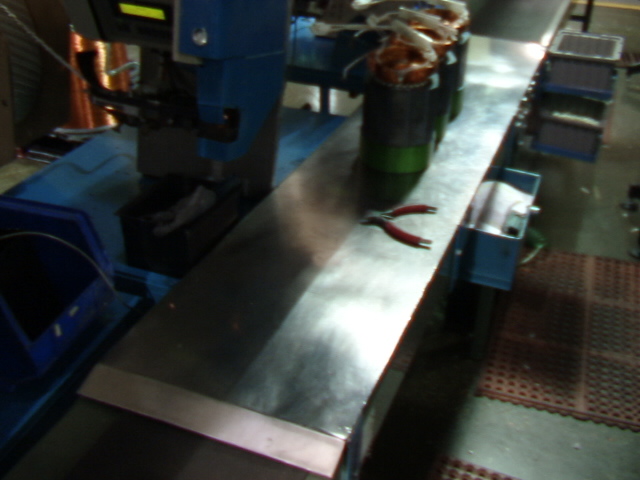 |
| Heat, dust, noise, and vibration | Glare and shadows |
This topic is somewhat of a catch-all category in industrial ergonomics. Some topics are normally addressed through the tools of other fields, such as toxic chemicals and the field of industrial hygiene. Other issues, such as lighting, have gained attention as part of the growth in office ergonomics.
Production issues
Humans do not perform well in less-than-ideal environments. Excessive heat and humidity slow us down; excessive cold hinders effective work. Poor lighting can negatively affect our work in multiple ways. Noise and vibration can contribute to fatigue.
Employee well-being
Poor lighting can create eye fatigue, plus contribute to awkward postures as people attempt to compensate to avoid glare or to see better in dim conditions. Vibration and shock can injure sensitive tissue. Noise causes hearing loss, and dusts and toxic chemicals can damage health.
Strategies for improvement
Lighting
Temperature extremes
Vibration and shock
Torque shock
Noise
Colors
Provide appropriate lighting
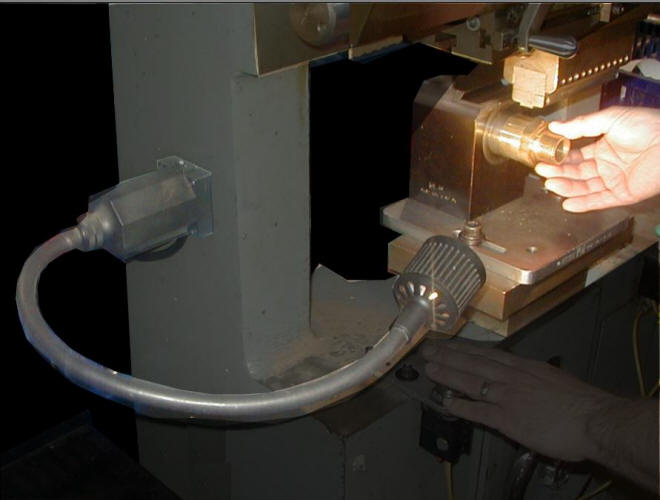 |
| Task light |
The quantity and quality of light at the workstation can either serve to enhance or obscure the details of your work. Common problems include:
- Glare and overly lit areas
- Shadows that hide details
- Poor contrast between your work and the background
Ways to make improvements include:
- Task lighting or indirect lighting
- Diffusers or shields to minimize glare
- Better placement of lights
For more details and examples of issues and improvements, see Workstations: Lighting.
Avoid temperature extremes
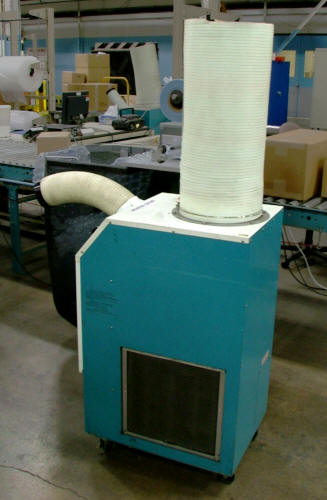 |
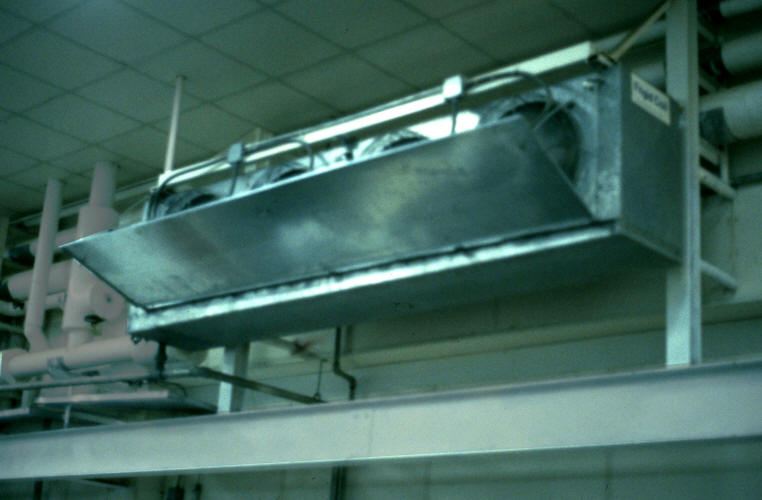 |
| Evaporative cooler | Cold air deflector |
Being excessively hot or cold while performing a task can cause discomfort and may contribute to health problems. In many cases where temperature is an important problem, the source is often inherent, such as outdoor work or the cold in meat and poultry plants. However, some steps can be taken to avoid some specific problems:
- Ventilation defusers or deflectors to keep cold air from blowing directly on people
- Heat shields around furnaces and other heat sources
- [more]
See Workstations: Temperature controls.
Dampen Vibration and Shock
Working with tools and equipment that create shock or vibration can cause injury. To isolate vibration:
- Use vibration dampening materials in or on tools
- Perform routine maintenance
- Mount equipment on vibration dampening pads
- Use cushioned floor mats for standing operations
- Change equipment speeds and feeds
- Vibration dampening material
Torque shock
 |
|
| Torque reaction bar |
In operations where power tools like screwdrivers and nut runners are used, it is important to use torque bars or make other modifications to prevent any shock from being transferred to the wrist. See Hand tools: Holders, torque control [future]
Noise
 |
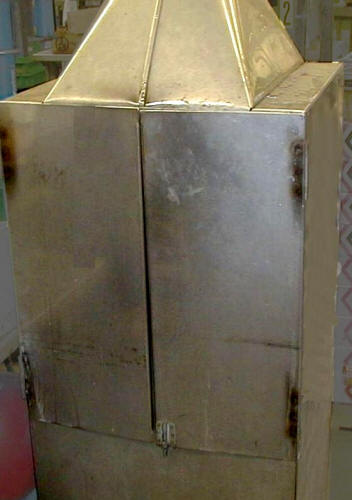 |
| Noise control enclosure with doors open and shut | |
Noise is an often-neglected topic that fits in the category of environmental issues. Multitudes of techniques are available to dampen noise, including isolation mounts, flexible connectors, mufflers, and streamlined air and fluid handling systems. In fact, there are so many techniques for noise control that it deserves a separate knowledgebase.
Colors
Colors can affect tasks in a number of important ways. Small parts on a traditional white assembly table can be difficult to see; contrasting work surface colors can make them visible. Matte colors can reduce glare and eyestrain. Color on walls and good use of art can enhance a work area.
An excellent example (but unfortunately no photo) is a meat packing plant where tile mosaics were added to walls to provide color and interest. Because of the need to sanitize all equipment frequently, everything is fabricated from stainless steel and white plastic, with no painted surfaces at all. Consequently, meat processing facilities are sterile looking as well. Tile mosaics provided a way to add color, yet stand up to continuous washing.
See also Workstations: Surface material
Colored surface to help visibility [future: more]
Measurements and guidelines
Most of the measuring techniques and guidelines for determining limits are well established.
- Lighting is typically measured with a standard light meter and can easily done by almost anyone with minimum direction. Other measurements can be used for specific purposes and best done by experts.
- Temperature is best evaluated with a wet bulb globe thermometer (WBGT). This device takes into account the key factors of radiant heat, convective heat, and evaporation, which a standard thermometer does not. The device is a bit complicated, but with training and experience can be performed by a competent person.
- Noise sources are most commonly evaluated with a noise meter or dosimeter. These devices are technical, but with training and experience can be used by a competent person.
- Vibration can be measured with a hand/arm vibration meter or with an accelerometer attached directly to the item being assessed. These tests can be complicated and should be done by an expert.
- Techniques for measuring dusts, fumes, and vapors depends on the specific contaminant. Normally these evaluations are best done by professional industrial hygienists, but in some circumstances, such as routine measurement of carbon monoxide, can be done by a trained competent person.
